
How to Use Adafruit Metro ESP32-S2: Examples, Pinouts, and Specs
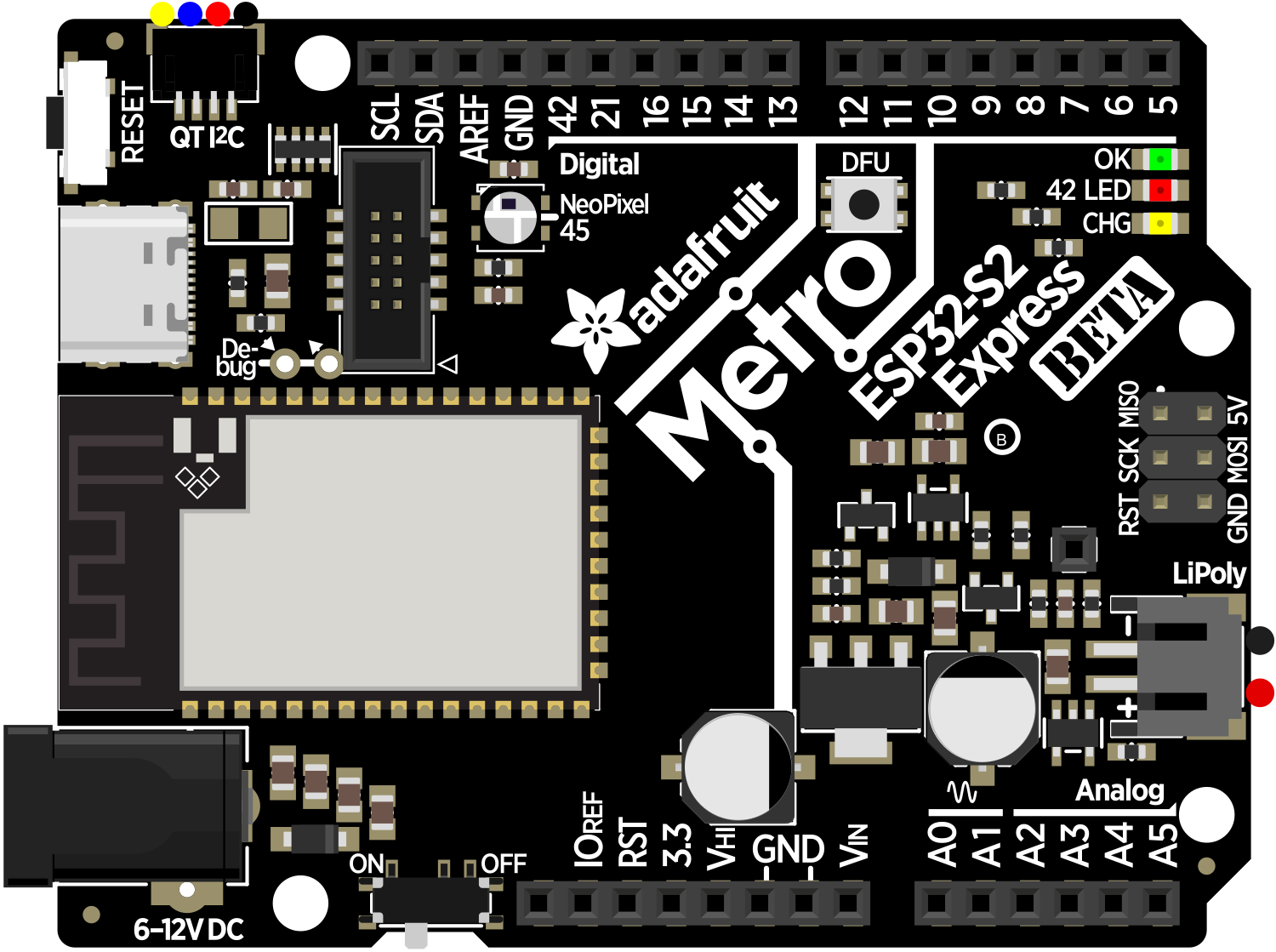
 Design with Adafruit Metro ESP32-S2 in Cirkit Designer
Design with Adafruit Metro ESP32-S2 in Cirkit DesignerIntroduction
The Adafruit Metro ESP32-S2 is a versatile and powerful development board that harnesses the capabilities of the ESP32-S2 chip. This board is designed for a wide range of applications, from Internet of Things (IoT) projects to complex wireless communication systems. With built-in Wi-Fi, USB connectivity, and an extensive array of General Purpose Input/Output (GPIO) pins, the Metro ESP32-S2 is a go-to choice for hobbyists and professionals alike.
Explore Projects Built with Adafruit Metro ESP32-S2
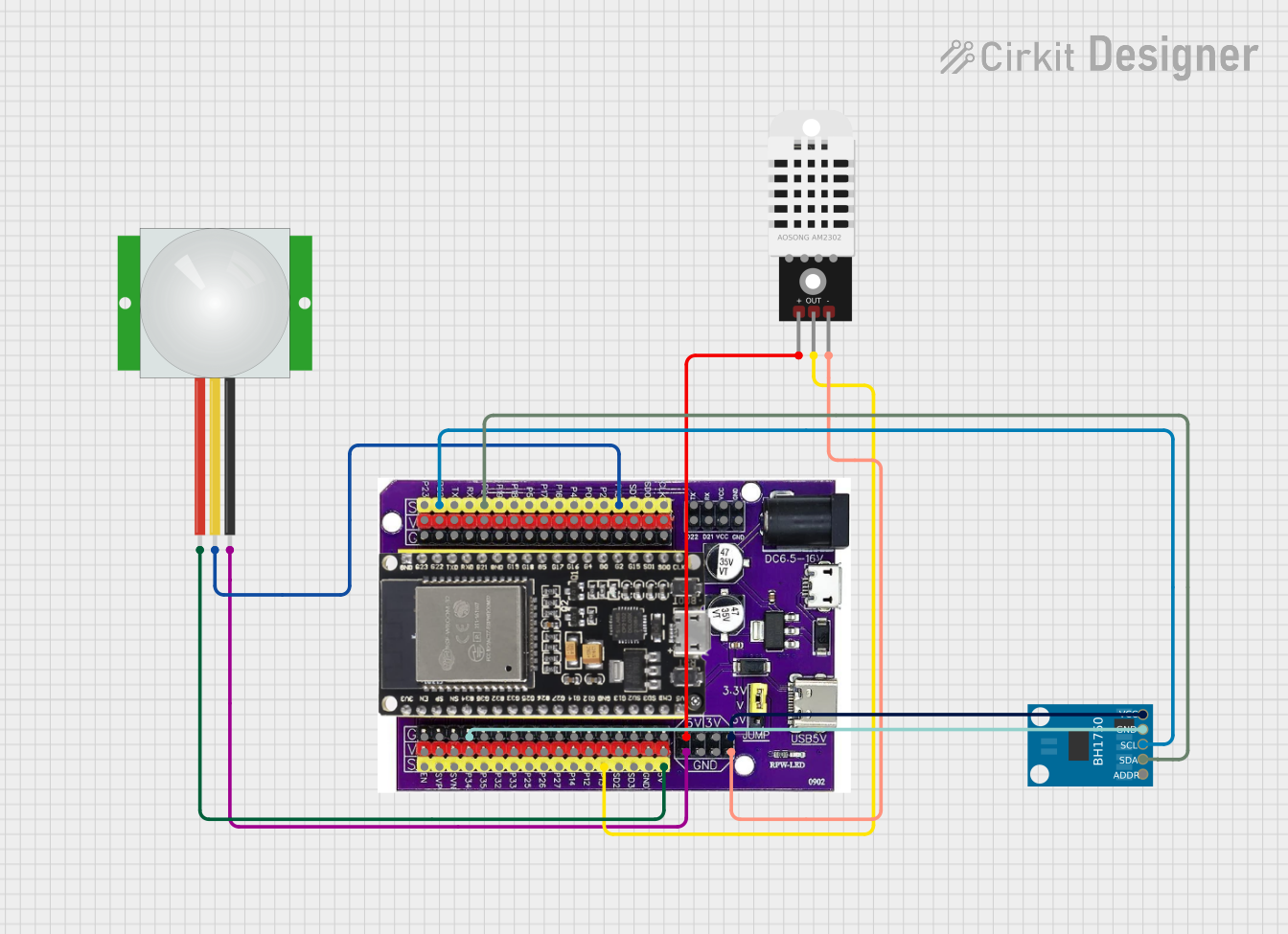
 Open Project in Cirkit Designer
Open Project in Cirkit Designer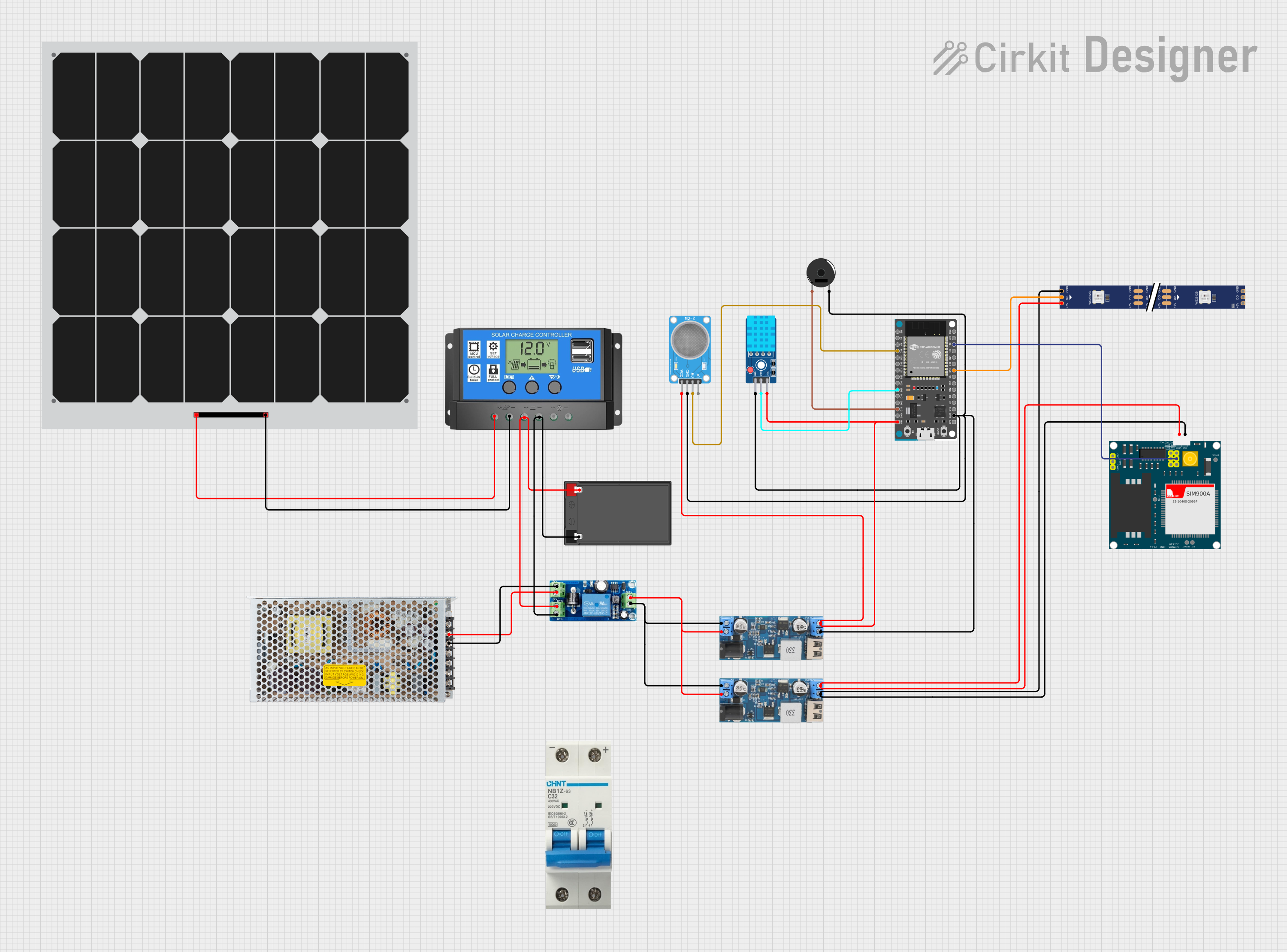
 Open Project in Cirkit Designer
Open Project in Cirkit Designer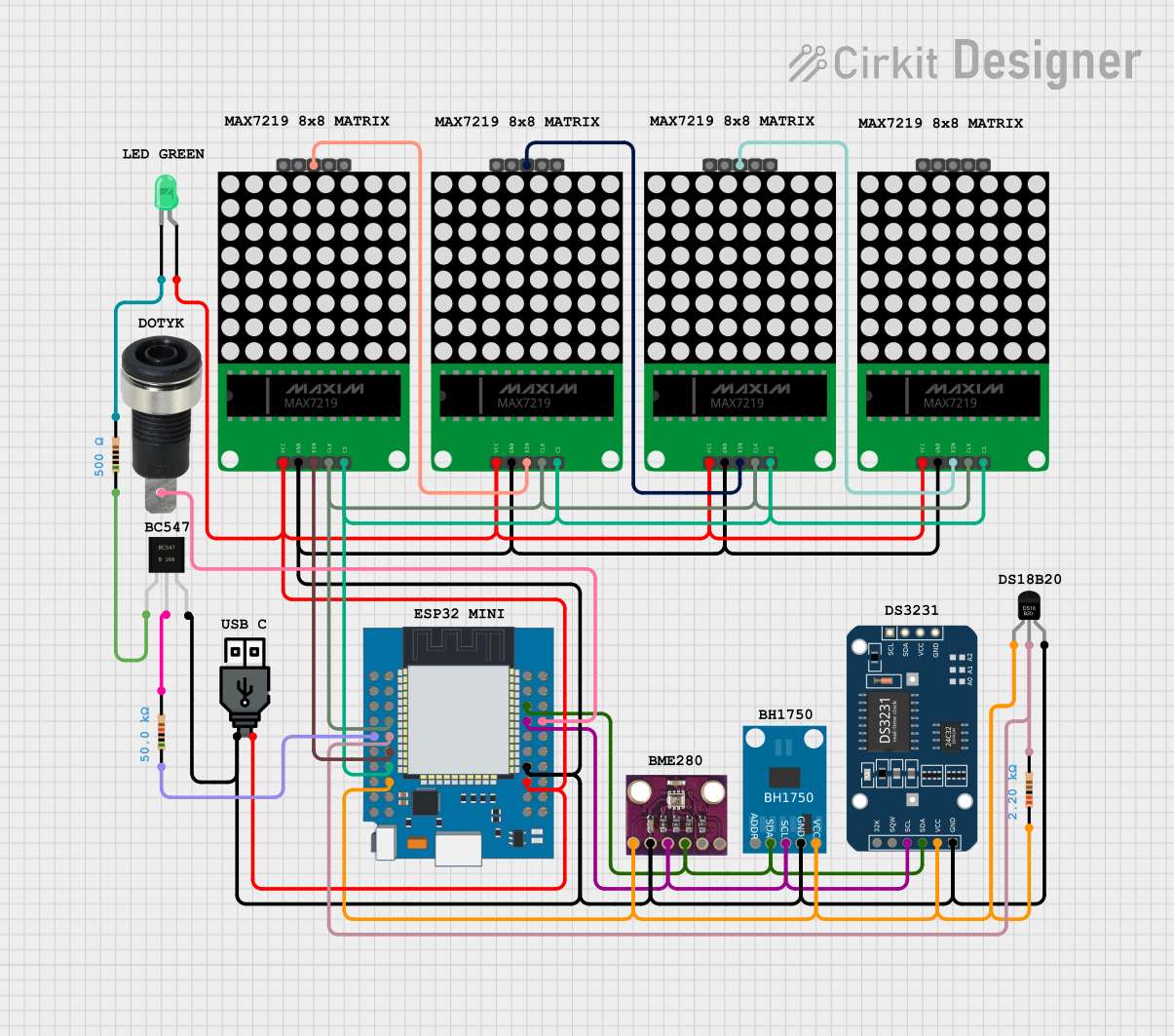
 Open Project in Cirkit Designer
Open Project in Cirkit Designer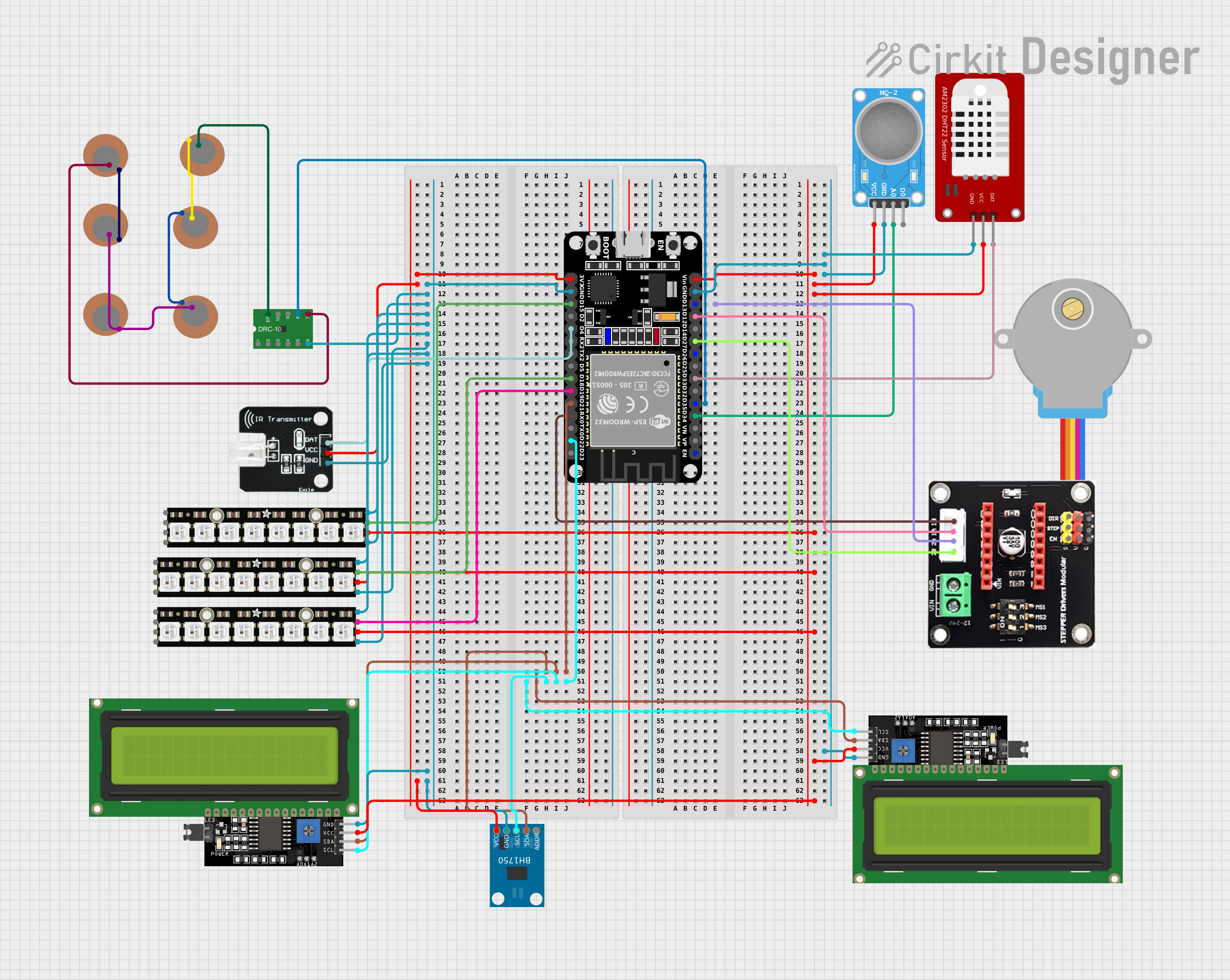
 Open Project in Cirkit Designer
Open Project in Cirkit DesignerExplore Projects Built with Adafruit Metro ESP32-S2

 Open Project in Cirkit Designer
Open Project in Cirkit Designer
 Open Project in Cirkit Designer
Open Project in Cirkit Designer
 Open Project in Cirkit Designer
Open Project in Cirkit Designer
 Open Project in Cirkit Designer
Open Project in Cirkit DesignerCommon Applications and Use Cases
- IoT devices
- Wireless sensor networks
- Home automation systems
- DIY electronics projects
- Prototyping for embedded systems
Technical Specifications
Key Technical Details
- Microcontroller: ESP32-S2
- Operating Voltage: 3.3V
- Input Voltage (recommended): 5V via USB or battery
- Digital I/O Pins: 21, all of which can do PWM
- Analog Input Pins: 16
- Flash Memory: 4 MB
- SRAM: 320 KB
- Clock Speed: 240 MHz
- Wi-Fi: 802.11 b/g/n
- USB: USB-C for programming and power
Pin Configuration and Descriptions
| Pin Number | Function | Description |
|---|---|---|
| 1 | 3V3 | 3.3V power supply pin |
| 2 | GND | Ground |
| 3-5 | GPIO 1, 2, 3 | General Purpose Input/Output |
| 6 | TX0 | UART transmit |
| 7 | RX0 | UART receive |
| 8-10 | GPIO 4, 5, 6 | General Purpose Input/Output |
| 11 | SDA | I2C data line |
| 12 | SCL | I2C clock line |
| 13-17 | GPIO 7-11 | General Purpose Input/Output |
| 18 | A0 | Analog input channel 0 |
| 19-34 | A1-A16 | Analog input channels 1-16 |
| 35 | VIN | Input voltage for battery or unregulated power |
Usage Instructions
How to Use the Component in a Circuit
- Powering the Board: Connect the USB-C cable to the board and a power source, or attach a battery to the VIN pin.
- Connecting I/O: Utilize the GPIO pins for digital input/output or PWM. Analog pins can be used for reading analog sensors.
- Programming: Use the USB-C connection to program the board with the Arduino IDE or other compatible development environments.
Important Considerations and Best Practices
- Ensure that the input voltage does not exceed the recommended 5V to prevent damage.
- When using Wi-Fi, take into account power consumption and possible interference with other wireless devices.
- Use proper decoupling capacitors close to the board's power pins to minimize noise.
- Avoid drawing more than 12 mA from any GPIO pin.
- For high-frequency PWM, consult the ESP32-S2 datasheet for optimal configurations.
Troubleshooting and FAQs
Common Issues
- Board not recognized by computer: Check the USB cable and port, try a different cable or port, and ensure drivers are installed.
- Wi-Fi connectivity issues: Verify Wi-Fi credentials, check signal strength, and ensure the antenna is not obstructed.
- Unexpected resets or crashes: This can be due to power supply issues. Make sure the power source is stable and within the specified voltage range.
Solutions and Tips for Troubleshooting
- Use Serial Monitor: Open the Serial Monitor in the Arduino IDE to check for error messages or debug output.
- Firmware Update: Ensure the board's firmware is up to date with the latest version.
- Community Forums: Adafruit has a supportive community forum where you can seek help for more complex issues.
Example Code for Arduino UNO
Below is a simple example of how to blink an LED connected to a GPIO pin on the Adafruit Metro ESP32-S2 using the Arduino IDE.
// Define the LED pin
const int LED_PIN = 13; // Use the onboard LED pin
// Setup function runs once at the start
void setup() {
// Initialize the LED pin as an output
pinMode(LED_PIN, OUTPUT);
}
// Loop function runs over and over again forever
void loop() {
digitalWrite(LED_PIN, HIGH); // Turn the LED on
delay(1000); // Wait for a second
digitalWrite(LED_PIN, LOW); // Turn the LED off
delay(1000); // Wait for a second
}
Remember to select the correct board and port in the Arduino IDE before uploading the code to the Adafruit Metro ESP32-S2.
For more complex applications involving Wi-Fi and IoT, refer to the ESP32-S2 specific libraries and examples provided by Adafruit and the ESP32 community.